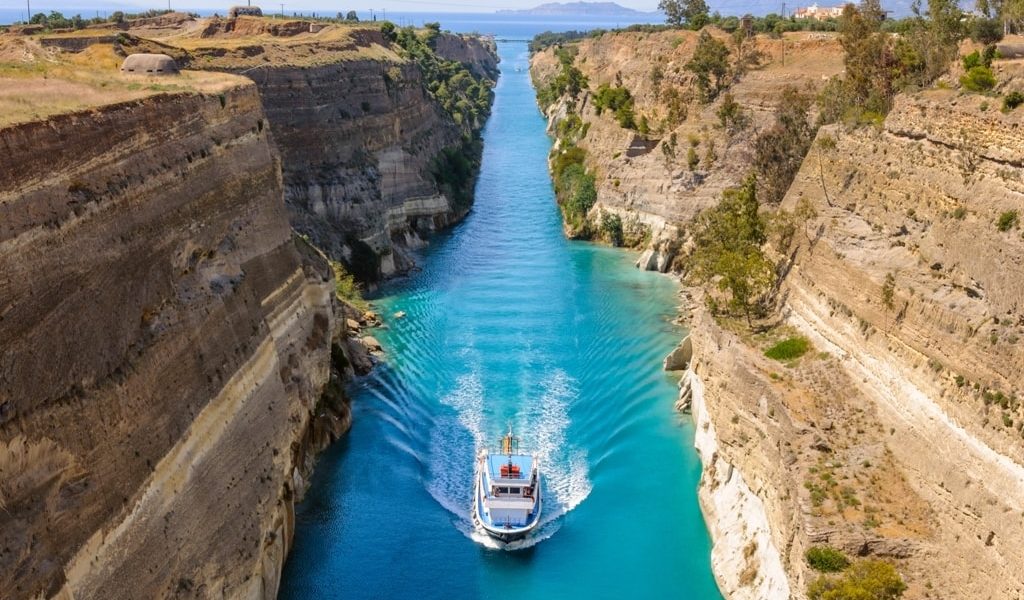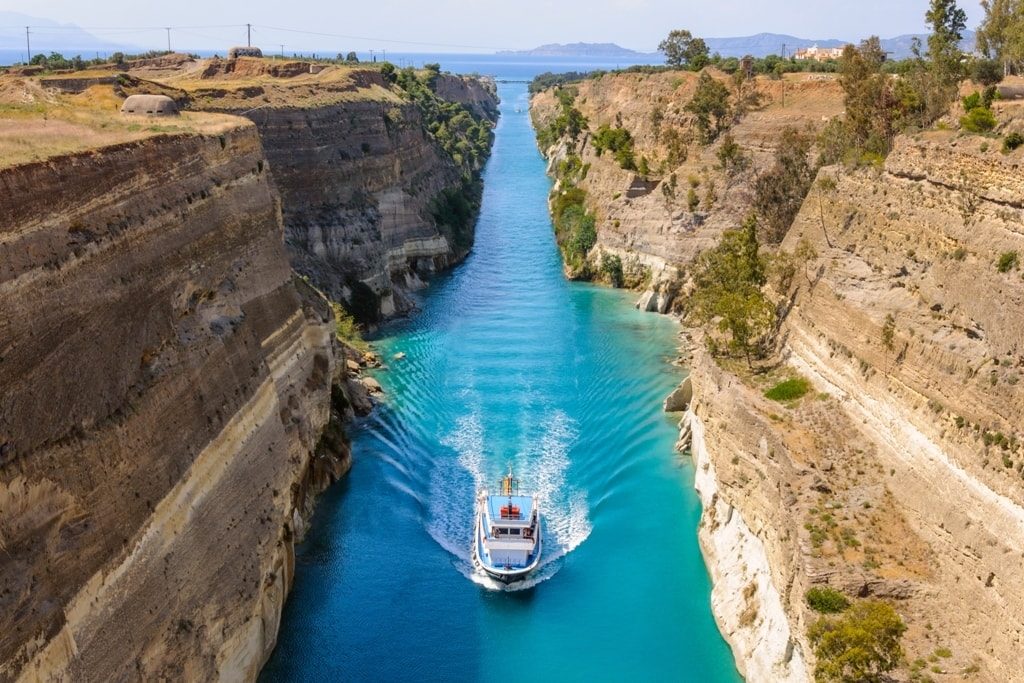
The Corinth Canal is one of the most important achievements of engineering in Greece, given it was constructed during the period of 1880 to 1893.
It is the work of the Greek engineer Petros Protopapadakis and its length is almost 6.5km and 25 metres wide.
The Corinth Canal joins the Corinth Gulf to the Saronic Gulf and is an important navigational route which once allowed ships to enter the Aegean Sea, although it is now impossible for modern ships to go through.
The canal was constructed in the late 19th century, although it was a 2000-year-old dream in the making. Before its construction, ships in the Aegean Sea that wanted to cross to the Adriatic or anchor in Corinth, a rich shipping city at the time, had to circle the Peloponnese, which would add an extra 185 nautical miles to their journey.
Technically, the Corinth Canal makes the Peloponnese an island, but since it’s so narrow, most people still refer to it as a peninsula.
*Video of the Corinth Canal
The Corinth Canal is named after the city of Corinth, which is the nearest city to the isthmus. The Canal has steep limestone walls that are about 300 feet from the water level to the top of the Canal and only 70 feet wide at sea level.
Ships must be narrower than 58 feet wide to go through the Canal. This small size was appropriate when the Canal was built in the late 19th century, but it is way too small for today’s ships. The Corinth Canal is now used by small cruise ships and tour boats.
Although construction was not completed until 1893, political leaders and sea captains had dreamed about building a canal in this location for over 2,000 years.
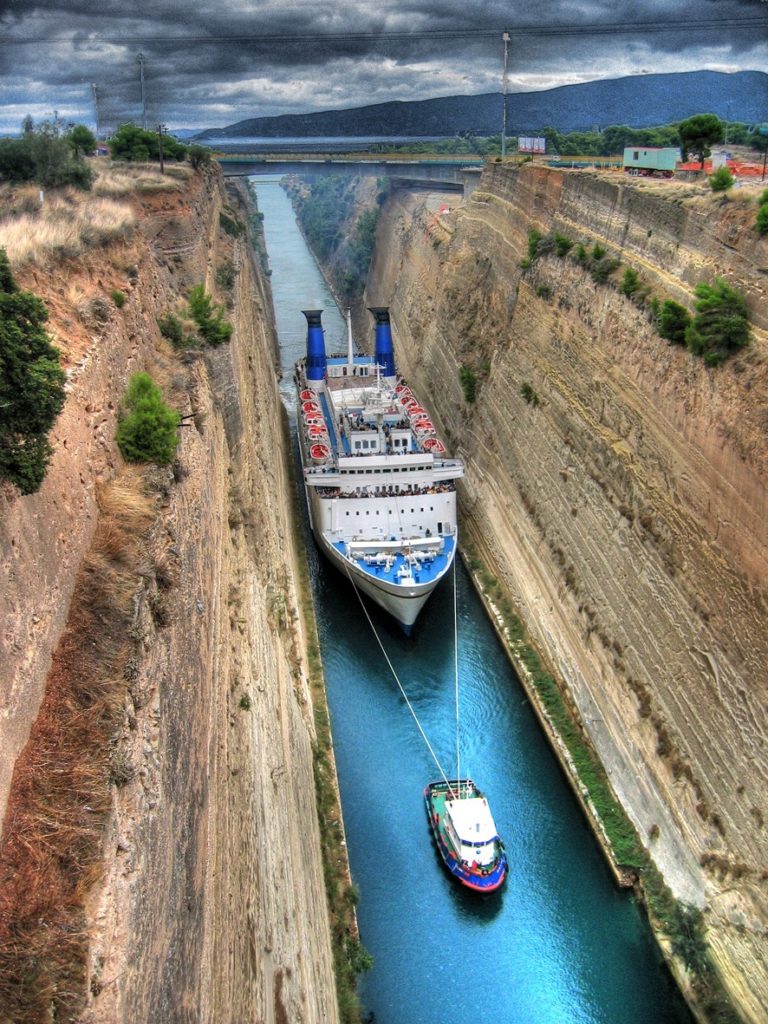
According to history, the first ruler to propose a canal was Periander in the 7th century B.C., however, it didn’t eventuate. In the first century A.D., philosopher Apollonius of Tyana predicted that anyone who planned to build a canal across the Corinthian isthmus would become ill. This prophecy didn’t deter three famous Roman emperors, but all died prematurely, making Apollonius look like a prophet. First, Julius Caesar planned to build a canal but was assassinated before it started. Next, Emperor Caligula hired some Egyptian experts to assemble a plan for a canal. The third Roman emperor was Nero, who made it past the planning stage and attempted to construct the canal. However, like the others, Nero died before the Canal was completed.
In the second century A.D., the Greek philosopher and Roman senator Herodes Atticus tried unsuccessfully to get a canal project re-started.
Greece then gained formal independence from the Ottoman empire in 1830 and the idea of building a canal across the isthmus near Corinth came about again. The Greek statesman Ioannis Kapodistrias hired a French engineer to assess the feasibility of the canal project. However, when the engineer estimated the cost to be 40 million gold francs, Greece couldn’t afford to proceed.
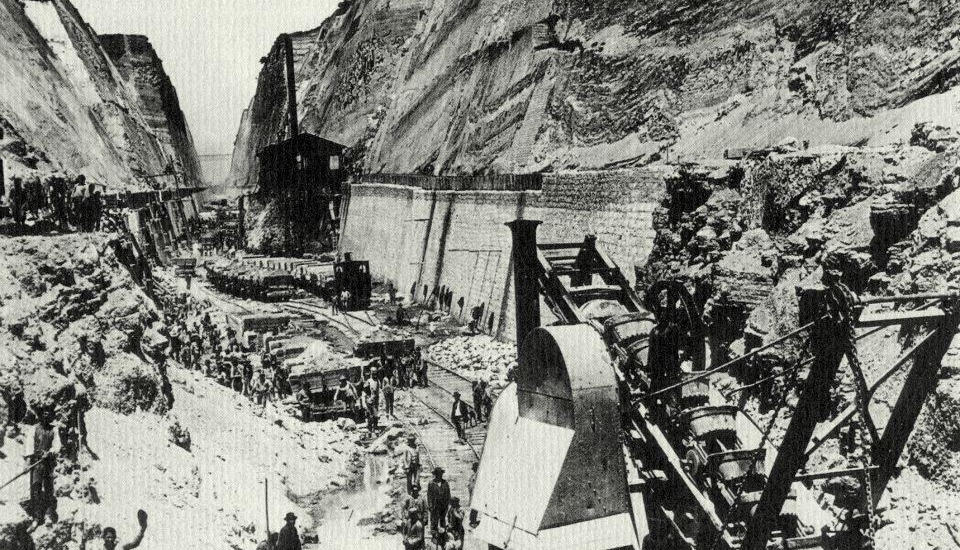
When the Suez Canal was opened in 1869, the Greek government reconsidered its own canal. Prime Minister Thrasyvoulos Zaimis at the time, passed a law in 1870 authorising the construction of a Corinth Canal and a French company was hired to oversee the project. It was not long before money became an issue again and the project ended.
Then in 1881, the Société Internationale du Canal Maritime de Corinthe was commissioned to build the canal and operate it for the next 99 years. King George I of Greece was present when construction begun in April 1882. After eight years of work, it ran out of money and in 1890, construction resumed when the canal project was transferred to a Greek company.
The canal was finally completed in July 1893, eleven years after construction had begun.
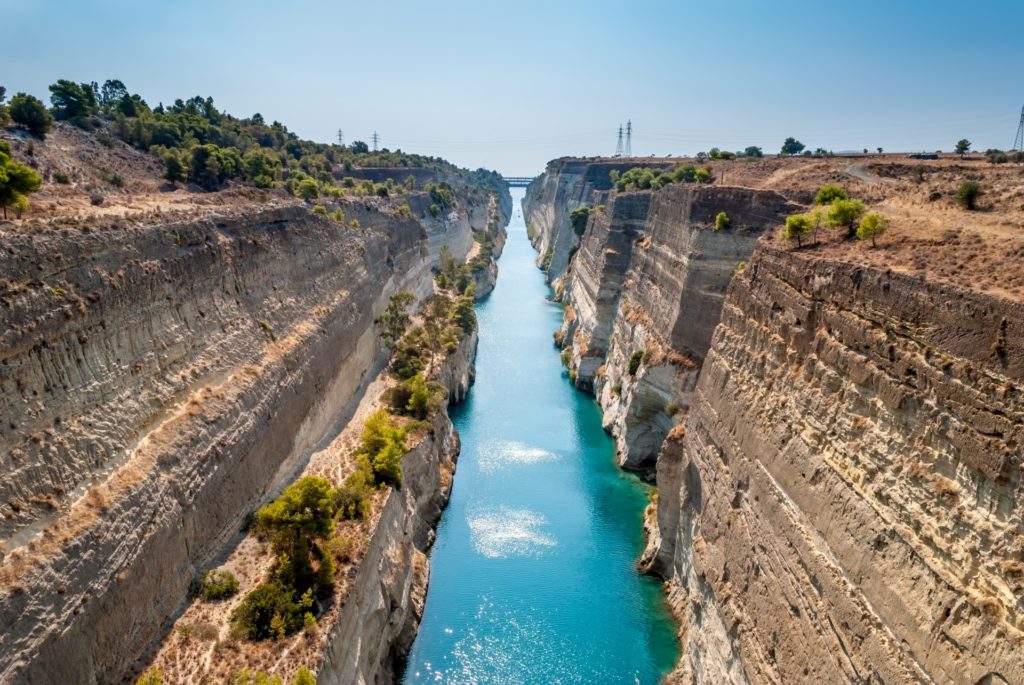
Although the canal saves ships about 400 miles, problems continued after the Corinth Canal was completed. The canal is very narrow, which makes navigation difficult and there is also strong currents in the canal, so many ship operators avoided the canal.
Today, the Corinth Canal is used primarily by small cruise ships and tourist boats. About 11,000 ships per year travel through the waterway.
There are now three ways of seeing the Corinth Canal. First, cruise lines with small ships transit the canal, secondly, several private companies depart from Piraeus port of Athens, and offer a cruise through the canal. Finally, cruise ships with a day in Athens often offer a half-day excursions. These tours offer plenty of chances to see the canal from the top edge to the water level.

